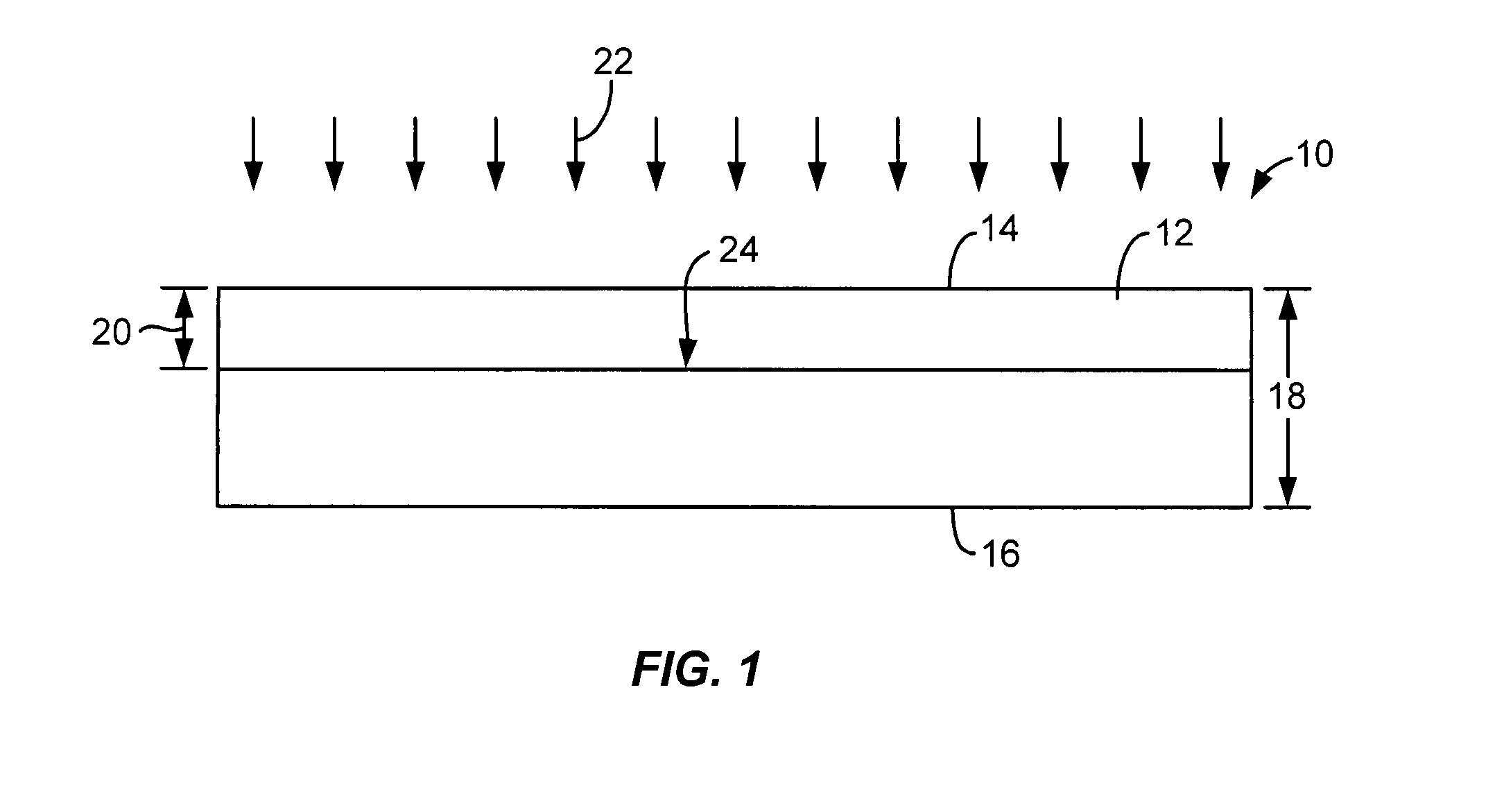Method and device for controlled cleaving process
a technology of controlled cleaving and cutting process, which is applied in the manufacture of substrates, coatings, metal working apparatuses, etc., can solve the problems of difficult separating or cutting extremely hard and/or brittle materials such as diamonds or glass, and cannot be used to provide precision separation in substrates for the manufacture of fine tools and assemblies
- Summary
- Abstract
- Description
- Claims
- Application Information
AI Technical Summary
Benefits of technology
Problems solved by technology
Method used
Image
Examples
Embodiment Construction
[0032]The present invention provides a technique for removing a thin film of material from a substrate while preventing a possibility of damage to the thin material film and / or a remaining portion of the substrate. The thin film of material is attached to or can be attached to a target substrate to form, for example, a silicon-on-insulator wafer. The thin film of material can also be used for a variety of other applications. The invention will be better understood by reference to the Figs. and the descriptions below.
[0033]FIG. 1 is a simplified cross-sectional view diagram of a substrate 10 according to the present invention. The diagram is merely an illustration and should not limit the scope of the claims herein. As merely an example, substrate 10 is a silicon wafer which includes a material region 12 to be removed, which is a thin relatively uniform film derived from the substrate material. The silicon wafer 10 includes a top surface 14, a bottom surface 16, and a thickness 18. S...
PUM
| Property | Measurement | Unit |
|---|---|---|
| pressure | aaaaa | aaaaa |
| surface roughness | aaaaa | aaaaa |
| surface roughness | aaaaa | aaaaa |
Abstract
Description
Claims
Application Information
 Login to View More
Login to View More - R&D
- Intellectual Property
- Life Sciences
- Materials
- Tech Scout
- Unparalleled Data Quality
- Higher Quality Content
- 60% Fewer Hallucinations
Browse by: Latest US Patents, China's latest patents, Technical Efficacy Thesaurus, Application Domain, Technology Topic, Popular Technical Reports.
© 2025 PatSnap. All rights reserved.Legal|Privacy policy|Modern Slavery Act Transparency Statement|Sitemap|About US| Contact US: help@patsnap.com



